This was published 1 year ago
The abandoned Aussie ghost town that lasted less than 20 years
Western Australia’s Big Bell is a prime example of outback riches turning to rust.
The early 1900s saw an influx of people from around the world descend on Western Australia’s goldfields, opting to endure harsh conditions for a chance of striking gold. If it wasn’t at the state’s gold rush-epicentre Kalgoorlie, people tried their luck at neighbouring settlements Gwalia, Kookynie and Ora Banda or headed to the Gascoyne Murchison region, home to Cue and Big Bell.
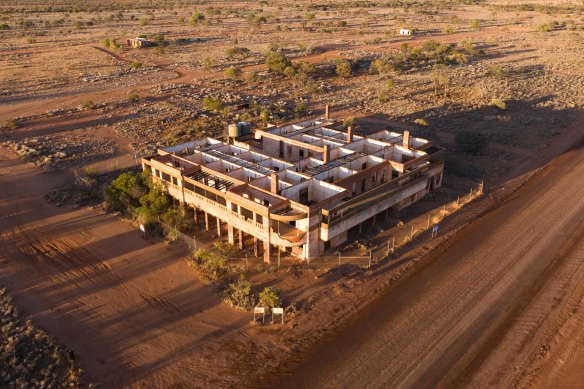
Big Bell’s hotel is one of the last remaining buildings.
Cue is Kalgoorlie’s northern gold-rush counterpart. Founded in 1893, it was a hub of the Murchison Goldfields, with the town dubbed “Queen of the Murchison”. You can tell money was pouring in; heritage buildings of a bygone era border the town’s main thoroughfare, Austin Street. Looking up and down the wide road, it’s easy to understand how it got its moniker – its double-storey Gentlemen’s Club stone building, Victorian-style Rotunda, and government stone building with rubble walls, to name a few, are gorgeous.
And yet, what was once opulence in the outback is now a living ghost town. It appears time stopped last century, with time-worn signage still present on Austin Street’s shopfronts – many either empty or slowly decaying – giving the so-called queen an endearing charm. Despite its melancholy appearance, just over 200 people call the town home. It’s far from its heyday population of 10,000, but still, Cue’s souls co-exist with ghosts, unlike its neighbouring town, Big Bell.
The Mid West-town, 31 kilometres northwest of Cue, never really had a chance to thrive. Established in 1936, it was gazetted to support Big Bell Mine, operated by Premier Gold Mining Company.
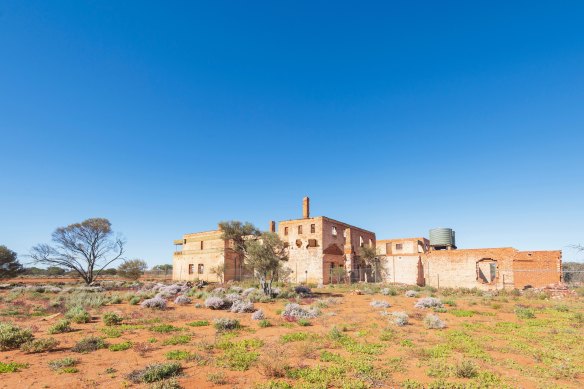
Big Bell was a hive of activity, boasting a theatre, two schools, three churches, a recreational park, a police station, and various shops.Credit: Alamy
Big Bell was a hive of activity, boasting a theatre, two schools, three churches, a recreational park, a police station, and various shops. It even became connected to Cue by the main railway line. Yet, unlike Cue, Big Bell never faced a slow decline and nor does it prosper because it never had a chance to beyond its 19-year existence.
Big Bell will forever be a teenager.
At its peak, Big Bell had a population of 850. But the town was swiftly deserted in 1955 after Big Bell Mine abandoned its mining efforts. The grid town now stands derelict in desert dust and mostly dismantled. It is now known as one of Western Australia’s ghost towns – one to visit if you like wandering eerie places.
Where houses once stood are now concrete slabs on red land, some featuring plaques to commemorate former residents. Twisted scrap metal litters the landscape. Dispersed trees, wildflowers and local wildlife are the only things breathing life into a once-prosperous town.
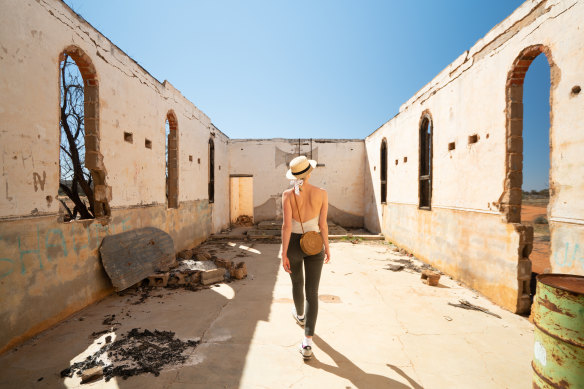
At its peak, Big Bell had a population of 850. But the town was swiftly deserted in 1955 after Big Bell Mine abandoned its mining efforts.
The town’s large, half-demolished red-brick hotel mirrors its sandy surroundings in colour. In its prime, it was the town’s only taproom with a bar top reputed to have been the longest in the country. I could only imagine Happy Hour was a raucous event walking through the roofless bar under a cloudless sky. Now, what’s left is bricks and wood strewn across floors and graffiti on walls. The bar’s metal and wooden beams hold their strength despite being subject to weathering.
Another building in disrepair is a stone brick church. It is also without a roof, windows without glass. A makeshift crucifix hanging over its plastered wall signifies its previous holy existence. It’s both spooky and stirring.
Despite the town being no more, it’s still possible to experience what it was like to live in Big Bell. In 1958, the town’s former nurse quarters were moved to Cue. The tiny shacks now serve as budget accommodation in Cue Tourist Park.
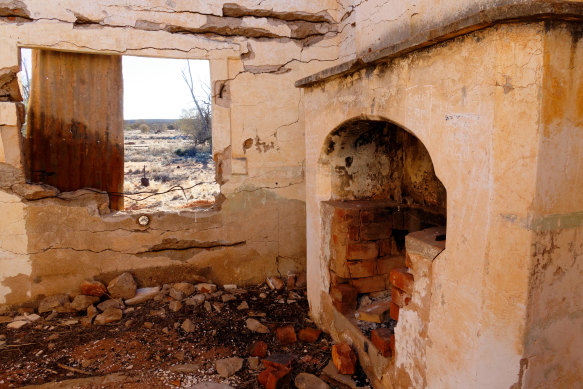
Exploring the ghost town is an eerie experience.Credit: Alamy
A further 36 kilometres on unsealed roads from Big Bell is Walga Rock. The natural attraction provides another glimpse into the past – except that it dates much further back. Walga Rock has the largest collection of Indigenous rock paintings in Western Australia, featuring almost 1000 intact drawings across its 60-metre-high wave-shaped cave.
Despite their differences, the ghosts of the past remain in the Mid West – it’s just that one site needs a bit more imagination.
THE DETAILS
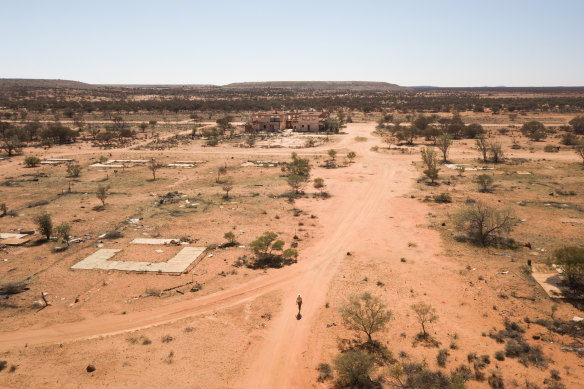
Big Bell
FLY
Skippers Aviation operates multiple flights daily ex-Perth to Mount Magnet. From Mount Magnet, drive to Cue (50 minutes) and then onto Big Bell (23 minutes). See skippers.com.au
STAY
Rooms at Cue Tourist Park from $95. See cue.wa.gov.au/cue-tourist-park
Rooms at Melangata Station Stay from $20 (Two hours drive from Big Bell or Mount Magnet). See melangatastationstay.com.au
The writer was a guest of Australia’s Golden Outback.
Sign up for the Traveller Deals newsletter
Get exclusive travel deals delivered straight to your inbox. Sign up now.